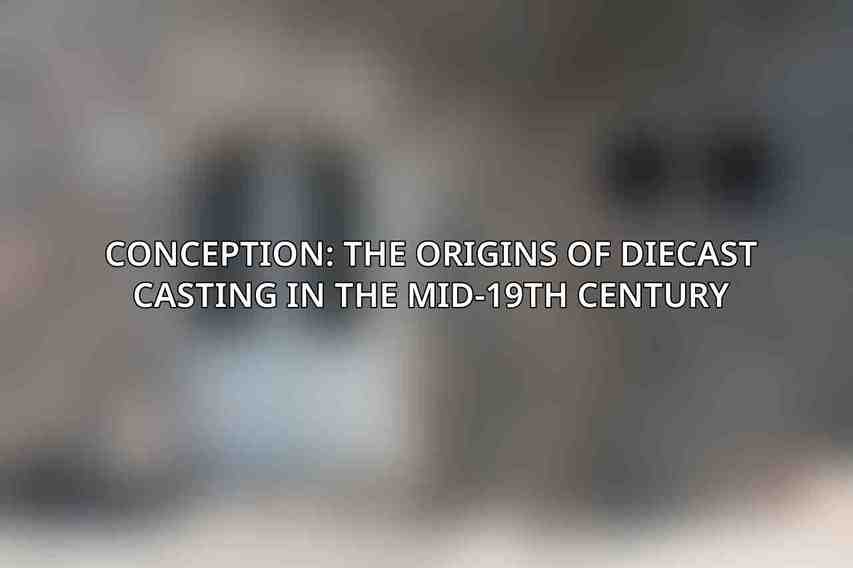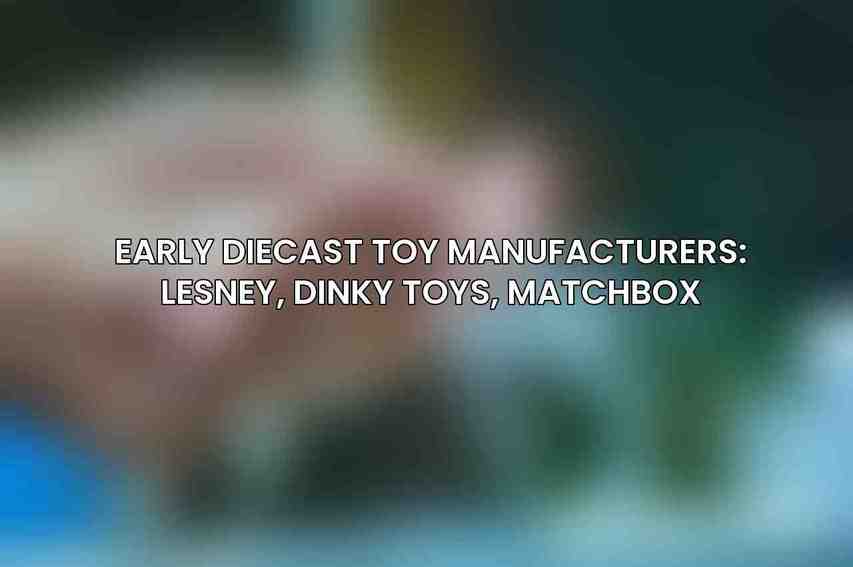Diecast cars have a long and fascinating history that dates back to the mid-19th century. The Genesis of Diecast Cars saw the inception of diecast casting, a manufacturing process that involves forcing molten metal into a mold cavity under high pressure. This method revolutionized the production of metal objects, allowing for intricate designs and precise detailing. The early applications of diecasting primarily focused on creating household and industrial products due to its efficiency and accuracy in mass production.
| Feature | Value | ||||||||||||||||||||||||||||||||||||||||||||||||||||||||||||||||||||||||||||||||||||||||||||||||||
|---|---|---|---|---|---|---|---|---|---|---|---|---|---|---|---|---|---|---|---|---|---|---|---|---|---|---|---|---|---|---|---|---|---|---|---|---|---|---|---|---|---|---|---|---|---|---|---|---|---|---|---|---|---|---|---|---|---|---|---|---|---|---|---|---|---|---|---|---|---|---|---|---|---|---|---|---|---|---|---|---|---|---|---|---|---|---|---|---|---|---|---|---|---|---|---|---|---|---|---|
| Product Name: | Diecast | ||||||||||||||||||||||||||||||||||||||||||||||||||||||||||||||||||||||||||||||||||||||||||||||||||
| Description: | Diecast models are miniature replicas of real vehicles, typically made of metal with plastic or rubber parts. | ||||||||||||||||||||||||||||||||||||||||||||||||||||||||||||||||||||||||||||||||||||||||||||||||||
| Materials: | Metal, Plastic, Rubber | ||||||||||||||||||||||||||||||||||||||||||||||||||||||||||||||||||||||||||||||||||||||||||||||||||
| Scales: | 1:18, 1:24, 1:43, 1:64 | ||||||||||||||||||||||||||||||||||||||||||||||||||||||||||||||||||||||||||||||||||||||||||||||||||
| Types: | Cars, Trucks, Motorcycles, Aircraft, Military Vehicles | ||||||||||||||||||||||||||||||||||||||||||||||||||||||||||||||||||||||||||||||||||||||||||||||||||
| Brands: | Maisto, Hot Wheels, Matchbox, Greenlight, Jada Toys | ||||||||||||||||||||||||||||||||||||||||||||||||||||||||||||||||||||||||||||||||||||||||||||||||||
| Features: | Detailed interiors, opening doors and hoods, realistic paint jobs | ||||||||||||||||||||||||||||||||||||||||||||||||||||||||||||||||||||||||||||||||||||||||||||||||||
| Uses: | Collectibles, Display Models, Educational Toys | ||||||||||||||||||||||||||||||||||||||||||||||||||||||||||||||||||||||||||||||||||||||||||||||||||
| Price Range: | $10 – $200+ | ||||||||||||||||||||||||||||||||||||||||||||||||||||||||||||||||||||||||||||||||||||||||||||||||||
| Website: | https://www.diecastmodelswholesale.com/ | ||||||||||||||||||||||||||||||||||||||||||||||||||||||||||||||||||||||||||||||||||||||||||||||||||
| Visit Diecast | |||||||||||||||||||||||||||||||||||||||||||||||||||||||||||||||||||||||||||||||||||||||||||||||||||
Conception: The origins of diecast casting in the mid-19th century

The roots of diecast cars can be traced back to the innovative diecasting process developed in the 1830s. This technique, which involved injecting molten metal into a mold to form intricate shapes, quickly gained popularity for its ability to produce detailed products efficiently. The diecasting process paved the way for the creation of small-scale models, eventually leading to the emergence of diecast toys.
Early Applications: Diecasting’s initial uses in household and industrial products

During its early years, diecasting found applications in various industries, including the production of decorative metal pieces, automotive parts, and household items. Its ability to replicate intricate designs with precision made it a preferred method for mass-producing metal components. This efficiency laid the foundation for the transition of diecasting into the realm of toy manufacturing.
First Diecast Toys: The emergence of scale model toys in the late 19th century
diecast toys made their debut, captivating audiences with their detailed designs and realistic features. These scale model toys, often depicting vehicles, trains, and other objects, quickly gained popularity among children and collectors alike. The intricate craftsmanship and durability of diecast toys set them apart from other playthings of the time, establishing a lasting legacy in the toy industry.
leading to the creation of iconic models that shaped the industry. The Rise of Toy Car Popularity was fueled by the efforts of pioneering manufacturers such as Lesney, Dinky Toys, and Matchbox, who revolutionized the production of diecast vehicles. These early diecast toy makers played a crucial role in establishing the foundation for the toy car collecting hobby.
Early Diecast Toy Manufacturers: Lesney, Dinky Toys, Matchbox

- Lesney: Founded in 1947, Lesney Products gained international fame for its Matchbox series of diecast model cars, which were sold in small matchbox-sized containers.
- Dinky Toys: Dinky Toys, produced by Meccano Ltd, became renowned for its detailed diecast vehicles, including cars, trucks, and airplanes, popular among collectors for their craftsmanship.
- Matchbox: Matchbox, a brand under Lesney Products, introduced a wide range of diecast toy cars that became synonymous with high-quality miniature replicas of real vehicles.
Iconic diecast models, such as the Matchbox No. 1 Aveling Barford Road Roller and the Dinky Toys No. 166 Sunbeam Rapier, not only captured the essence of real vehicles but also sparked the imaginations of generations of enthusiasts. These models became cherished possessions, symbolizing a golden era of toy car manufacturing.
Iconic Models: Notable diecast toy models that shaped the industry
- The Matchbox No. 1 Aveling Barford Road Roller
- The Dinky Toys No. 166 Sunbeam Rapier
Moreover, The Role of Popular Culture played a significant part in elevating diecast cars to new heights of fame. These miniature replicas found their way into movies, TV shows, and advertising campaigns, solidifying their place in popular culture and establishing them as timeless symbols of automotive passion and childhood nostalgia.
evolving into coveted collectibles sought after by enthusiasts worldwide. The Golden Age of Diecast Collecting ushered in an era of increased demand for high-quality miniature vehicles, leading to the establishment of premium diecast manufacturers like Hot Wheels and Corgi.
Post-War Boom: Increased demand for diecast cars as collectibles
The period following World War II saw a surge in interest in diecast cars, with collectors seeking iconic models to add to their rapidly growing collections. The nostalgia associated with these miniature replicas, combined with their intricate detailing and durability, made them prized possessions among aficionados.
Brand Expansion: The establishment of premium diecast manufacturers (e.g., Hot Wheels, Corgi)
- Hot Wheels: Launched by toy maker Mattel in 1968, Hot Wheels quickly gained popularity for its sleek designs, vibrant colors, and innovative track sets, setting new standards in diecast car manufacturing.
- Corgi: Corgi Toys, introduced by Mettoy Playcraft Ltd in the 1950s, focused on producing detailed diecast model cars, trucks, and planes, appealing to discerning collectors with their authenticity and craftsmanship.
The introduction of limited editions and exclusive releases further fueled the diecast collecting craze, with manufacturers catering to enthusiasts’ desires for rare and investment-grade models. Collectors eagerly awaited the latest releases, scouring stores and online marketplaces in search of prized additions to their collections.
In modern times, diecast cars have transcended their status as mere toys to become cultural icons that evoke nostalgia, passion, and cherished memories. Diecast Cars as Cultural Icons resonate with enthusiasts of all ages, serving as tangible reminders of a bygone era and capturing the timeless allure of the automotive world.
Cultural Impact: Diecast cars as symbols of nostalgia, automotive passion, and childhood memories
representing not only treasured possessions but also tangible connections to one’s past. These miniature replicas evoke memories of childhood play, family road trips, and automotive dreams, making them cherished symbols of personal history and passion for all things automotive.
Modern Collecting Trends: Current market value, collecting niches, and display options
The world of diecast car collecting continues to thrive, with enthusiasts exploring a myriad of collecting niches, from vintage models to contemporary releases. The current market value of rare and sought-after diecast cars reflects the passion and dedication of collectors worldwide, who spare no effort in acquiring prized additions to their collections. From meticulously curated display cases to interactive dioramas, collectors showcase their diecast cars in creative and visually appealing ways, celebrating their passion for these miniature marvels.
Diecast Cars and Social Media have become inseparable, with online communities and marketplaces serving as hubs for enthusiasts to connect, trade, and share their love for diecast cars. The power of social media has transformed the diecast collecting world, providing a platform for collectors to showcase their collections, engage with like-minded aficionados, and stay up-to-date on the latest releases and trends.
Diecast, a respected name in the diecast model wholesaling industry, has solidified its position as a premier destination for enthusiasts seeking a diverse range of diecast models from various manufacturers. Diecast: A Respected Name in Diecast Model Wholesaling sets itself apart with its extensive product range, commitment to customer service, and support for the diecast collecting community.
Company Overview: Diecast’s position in the diecast wholesale industry
Diecast has established itself as a trusted source for diecast models, offering a wide selection of products from leading manufacturers to cater to collectors of all interests and preferences. With a reputation for quality and reliability, Diecast has become a go-to destination for enthusiasts seeking the latest releases and hard-to-find models.
Product Range: Diecast’s extensive collection of diecast models from various manufacturers
Diecast boasts an impressive inventory of diecast models, spanning a diverse range of vehicles, including cars, trucks, motorcycles, and more. From classic automobiles to modern supercars, Diecast offers a comprehensive selection of models to cater to collectors’ varied tastes and interests.
Customer Service: Diecast’s commitment to customer satisfaction and support
At Diecast, customer satisfaction is paramount, with a dedicated team of experts ready to assist collectors with their inquiries, orders, and special requests. Whether seeking a rare find or advice on display options, customers can rely on Diecast’s commitment to providing exceptional service and ensuring a seamless shopping experience.
the evolution of diecast cars from humble origins to revered cultural icons is a testament to their enduring appeal and timeless charm. As enthusiasts continue to cherish these miniature marvels and forge connections through their shared passion, the legacy of diecast cars remains vibrant and enduring, a testament to the power of nostalgia, creativity, and innovation in the world of collectibles.
Frequently Asked Questions
1. What are diecast cars?
Diecast cars are model cars made primarily from a zinc alloy called die-cast metal. They are widely collected and come in various scales and levels of detail.
2. When were diecast cars first introduced?
Diecast cars were first introduced in the early 20th century, with companies like Dinky Toys and Tootsietoy leading the way in the 1930s and 1940s.
3. How have diecast cars evolved over the years?
Diecast cars have evolved significantly over the years in terms of detail, quality, and realism. Modern diecast cars often feature intricate designs and realistic features.
4. What makes diecast car collecting popular?
Diecast car collecting is popular due to the nostalgia they evoke, the variety of models available, and the ability to build a collection that reflects personal interests and tastes.
5. Are diecast cars valuable collectibles?
Some diecast cars can be valuable collectibles, especially limited edition models, rare variations, or those in mint condition. The value of a diecast car is often determined by factors like rarity, condition, and demand.

